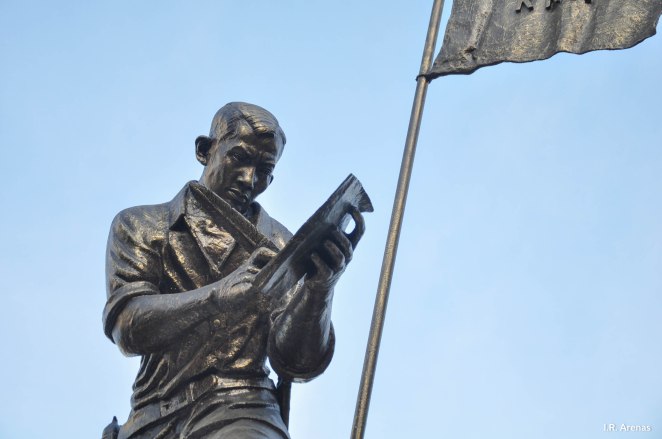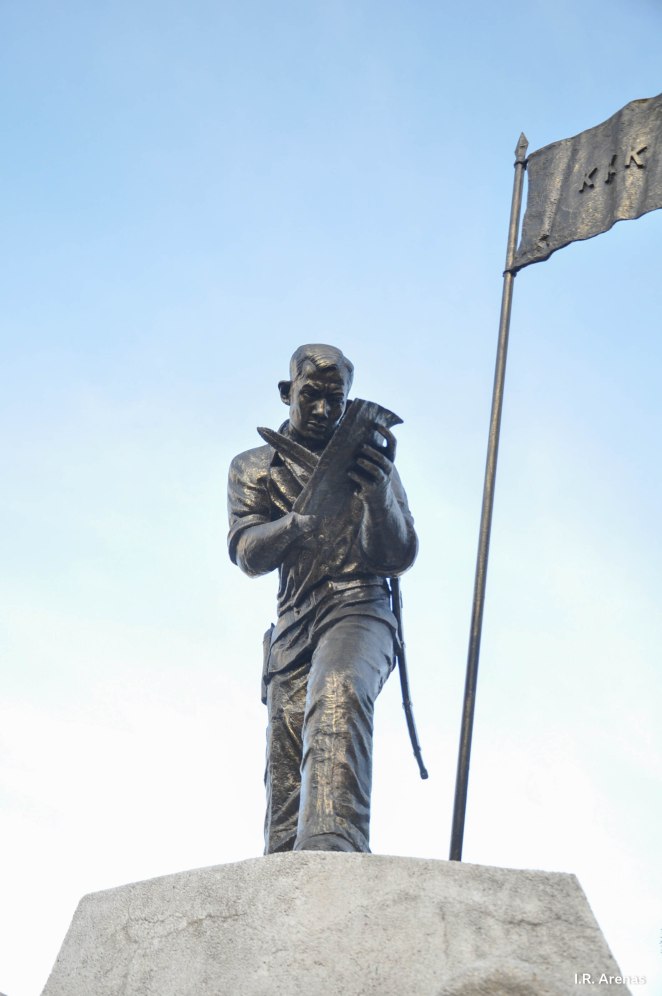Sculpture 16: Andres Bonifacio in Tutuban
At a plaza that lies opposite the former train terminal in Tutuban stands a monument to a great figure of the Philippine struggle for independence.
Andres Bonifacio lived a short life, but it was a life dedicated to an awakening and a harsh call to action. He learned of the social ills and did not remain silent nor passive. He was among the people, experiencing firsthand the injustices done with impunity by a waning colonial power.
Many of his monuments are scattered across Manila, perhaps reminding the forgetful citizenry of his heroism that could have done more had he not been unfairly executed by a political rival.
He was born in Tondo, a district just outside the old city boundaries of Manila (meaning Intramuros).
Many thanks to Google Translate, the English text would thus be the following. The Filipino translation is my own doing.
The children of the Filipino people erected this monument for the eternal consecration of the site where the popular hero Andres Bonifacio, father of the Katipunan and arm of the liberating movement of 1896, was born on November 30, 1863.
Itinayô ng mga anak ng bayang Filipino itong bantayog para sa walang-hanggang paghahandog ng lugar na ito kung saan ipinanganak noong 30 Nobyembre 1863 ang tanyag na bayaning si Andres Bonifacio, ang ama ng Katipunan at ang bisig ng mapagpaláyang pagkilos ng 1896.
Here, Bonifacio is portrayed as a revolutionary and as a writer (probably a poet). The quill and paper are made more potent than the use of force as his revolver stays in its holster and his iták (a native machete) rests in its scabbard.
During his lifetime, he wrote several poems and articles. The poem “Pag-ibig sa Tinubuang Bayan” was a reproduction of Jose Rizal’s essay “El amor patrio”. “Pahimakas” was his translation of Rizal’s untitled swansong poem later known to be “Mi ultimo adios”. He also used to be a theatre actor with Macario Sakay and Aurelio Tolentino.
Bonifacio was an artist and a revolutionary.







